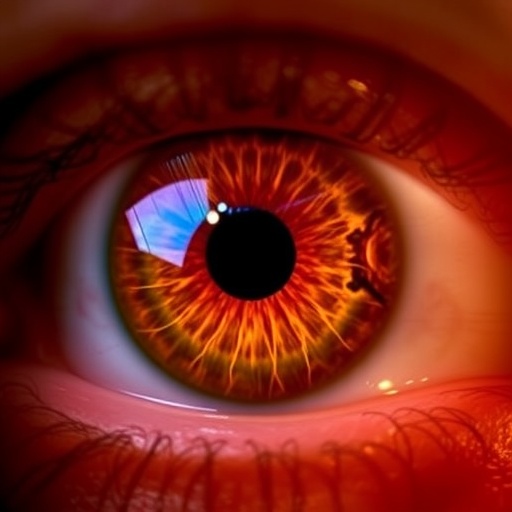A groundbreaking breakthrough in vision restoration has emerged from the realm of advanced medical technology, promising hope for millions affected by geographic atrophy due to age-related macular degeneration (AMD). Published recently in the renowned New England Journal of Medicine, the latest clinical trial data reveals that the PRIMA system — a wireless retinal implant — successfully restores central vision in patients with advanced dry AMD, marking an unprecedented leap in ophthalmic innovation.
Age-related macular degeneration, particularly its advanced atrophic form known as geographic atrophy (GA), stands as the foremost cause of irreversible blindness among older populations worldwide. The degeneration involves the destruction of photoreceptors in the macula, the small but critical region of the retina responsible for sharp, central vision. This leads to the progressive worsening of visual acuity, severely impacting daily activities such as reading and recognizing faces for over five million individuals globally. Until now, no treatment could reverse this loss or restore central vision.
The international, multi-center PRIMAvera clinical trial, co-led by distinguished ophthalmologists José-Alain Sahel, Daniel Palanker, and Frank Holz, examined the efficacy of the PRIMA implant in 38 participants aged 60 and older across 17 sites in Europe. Sahel, based at the UPMC Vision Institute, Palanker from Stanford University, and Holz from the University of Bonn, pooled their expertise to analyze outcomes following one year of device usage, highlighting a paradigm shift in the management of AMD.
Remarkably, among the 32 participants who completed a full 12-month follow-up, an overwhelming 81% demonstrated clinically meaningful improvements in visual acuity, while 84% reported using prosthetic vision for functional tasks such as reading numbers and words in their everyday environments. Quantitatively, the average improvement amounted to 25 letters on the standard eye chart, which translates to an approximate five-line gain in vision, underscoring the implant’s profound functional impact.
The PRIMA system is a marvel of biomedical engineering designed to replace the lost photoreceptor function through a compact, wireless 2×2 mm subretinal implant. Developed initially by Dr. Palanker, the implant converts projected near-infrared light into precisely calibrated electrical stimuli that activate the residual retinal neurons. The process begins with a miniature camera mounted on specially crafted glasses, capturing real-time images and transmitting them wirelessly to the implant beneath the retina where the bioelectronic conversion occurs.
Unlike conventional vision restoration approaches, the PRIMA device bypasses the damaged photoreceptors and directly stimulates the inner retinal circuitry. This bioelectronic retina replacement leverages the remaining retinal structure to transmit visual information to the optic nerve and subsequently to the brain’s visual cortex, reestablishing a functional visual pathway. Moreover, patients can customize zoom and contrast settings, optimizing the quality of prosthetic vision to meet their individual needs and visual preferences.
Across the trial cohort, post-surgical recovery was exemplary, with all procedure-related adverse effects resolving within the first year. The visual gains were substantial and consistent, with the most dramatic case achieving an extraordinary 59-letter improvement, equivalent to twelve lines on the eye chart—a transformative functional restoration that exceeds the expectations of previous experimental interventions.
While achieving full 20/20 vision restoration remains beyond the current capabilities of the PRIMA system, researchers at UPMC and collaborators actively pursue enhancements through combined technological and biomedical advancements. These efforts aim to surpass legal blindness criteria, dramatically elevating patients’ independence and quality of life beyond current thresholds, signaling a future of renewed hope for those afflicted with vision loss from AMD.
This early success has galvanized regulatory pathways, prompting Science Corporation, the device manufacturer, to seek clinical authorization for widespread use in Europe and the United States. Notably, UPMC has been at the forefront, implanting the PRIMA system in the United States as early as 2020 within an initial trial led by associate professor Joseph Martel, evidencing the accelerating translation from research breakthroughs to clinical implementation.
In addition to the leading institutions involved, the study’s collaborative authorship spans notable eye centers including the Adolphe de Rothschild Foundation Hospital in Paris, Moorfields Eye Hospital in London, and the University of Rome Tor Vergata, reflecting a robust multinational effort in addressing one of ophthalmology’s greatest challenges.
Funded primarily by Science Corporation alongside support from the National Institute for Health and Care Research Biomedical Research Centre and UCL Institute of Ophthalmology, the study exemplifies a model of synergistic public-private research endeavors driving innovative solutions in medical science.
The clinical implications of this technological triumph extend beyond AMD, potentially heralding a new era in neuroprosthetics and vision science. The PRIMA system’s design embodies the convergence of bioengineering, ophthalmology, and neuroscience, opening avenues for future applications in other retinal diseases and sensory impairments, thereby expanding the horizon of restorative medicine.
As the global population ages, the burden of vision loss is expected to rise, amplifying the necessity for scalable, effective treatments. This breakthrough positions the PRIMA implant as a cornerstone technology with the capacity to transform the landscape of treatment options for degenerative retinal diseases, offering patients not just incremental improvements, but the restoration of meaningful vision and autonomy.
Subject of Research: People
Article Title: Vision Restoration with the PRIMA System in Geographic Atrophy Due to AMD
News Publication Date: 20-Oct-2025
Web References: https://www.nejm.org/doi/full/10.1056/NEJMoa2501396
References: Disclosure forms by the authors are available with the full text at NEJM.org
Image Credits: UPMC
Keywords: Macular degeneration, Vision disorders, Prosthetics, Retina, Ophthalmology, Blindness




